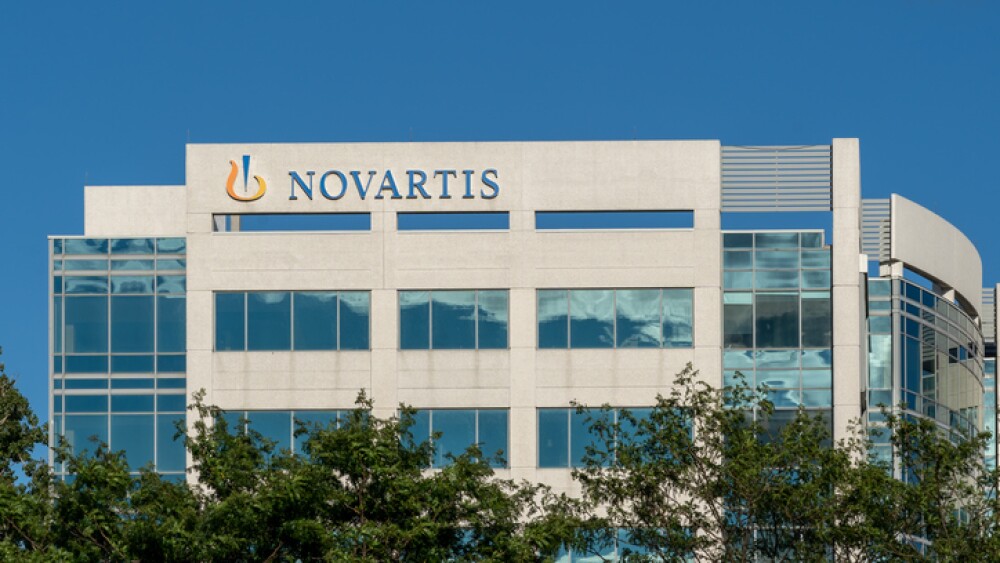THOUSAND OAKS, Calif., Oct. 5, 2016 /PRNewswire/ -- Amgen (NASDAQ:AMGN) today announced that new data on IMLYGIC® (talimogene laherparepvec) in combination with an immune checkpoint inhibitor and results from retrospective analyses on Vectibix® (panitumumab) will be presented at the European Society for Medical Oncology (ESMO) 2016 Congress, Oct. 7-11, 2016, in Copenhagen.
IMLYGIC presentations include interim results from a Phase 2 trial evaluating IMLYGIC in combination with ipilimumab versus ipilimumab alone in patients with unresected stage IIIB-IV melanoma. Vectibix abstracts include retrospective analyses of the first-line Phase 3 PRIME and PEAK studies, evaluating the association between tumor site of origin and treatment efficacy in patients with RAS wild-type metastatic colorectal cancer (mCRC).
"We look forward to sharing our research into the combination of a checkpoint inhibitor and Amgen's oncolytic immunotherapy in metastatic melanoma," said Sean E. Harper, M.D., executive vice president of Research and Development at Amgen. "Additionally, we are excited about our data around tumor site of origin as one of a number of potential factors that may inform treatment decisions for patients with metastatic colorectal cancer."
IMLYGIC data:
- Interim safety and efficacy of a randomized (1:1), open-label phase 2 study of talimogene laherparepvec (T) and ipilimumab (I) vs I alone in unresected, stage IIIB-IV melanoma
Abstract #1108PD, Poster Discussion, Monday, Oct. 10 from 11 a.m.-noon CET at Bella Center, Rome
Vectibix data:
- Outcome according to left vs. right side in the panitumumab studies
Special Session, Monday, Oct. 10 from 11:35-11:50 a.m. CET at Bella Center, Copenhagen - Primary tumor sidedness impacts on prognosis and treatment outcome: results from three randomized studies of panitumumab plus chemotherapy versus chemotherapy or chemotherapy plus bevacizumab in 1st and 2nd line RAS/BRAF WT mCRC
Abstract #89P, Poster, Monday, Oct. 10 from 1-2 p.m. CET at Bella Center, Hall E - Importance of tumour symptoms and extent of disease on efficacy of first-line FOLFOX4 ± panitumumab (pmab) in patients (pts) with RAS wild-type (WT)/BRAF WT metastatic colorectal cancer (mCRC) in the PRIME study
Abstract #482P, Poster, Monday, Oct. 10 from 1-2 p.m. CET at Bella Center, Hall E - Impact of depth of response (DpR) on survival in patients (pts) with RAS wild-type (WT) metastatic colorectal cancer (mCRC) receiving first-line panitumumab + FOLFOX4 vs FOLFOX4
Abstract #485P, Poster, Monday, Oct. 10 from 1-2 p.m. CET at Bella Center, Hall E - Efficacy of first-line modified FOLFOX6 with panitumumab or bevacizumab in RAS wild-type/BRAF wild-type metastatic colorectal cancer: Impact of tumour symptoms and extent of disease
Abstract #501P, Poster, Monday, Oct. 10 from 1-2 p.m. CET at Bella Center, Hall E - Associations between dermatologic toxicity severity, patient characteristics, and efficacy among patients treated with panitumumab (Pmab) and chemotherapy
Abstract #531P, Poster, Monday, Oct. 10 from 1-2 p.m. CET at Bella Center, Hall E
Abstracts are currently available on the ESMO website.
About IMLYGIC® (talimogene laherparepvec) in the EU
IMLYGIC is an oncolytic immunotherapy that is derived from HSV-1, which is commonly called the cold sore virus. IMLYGIC has been modified to replicate within tumors and to produce the immune stimulatory protein human GM-CSF. IMLYGIC causes the death of tumor cells and the release of tumor-derived antigens. It is thought that, together with GM-CSF, it will promote a systemic anti-tumor immune response and an effector T cell response.
Important EU Product Safety Information
This product is subject to additional monitoring. All suspected adverse reactions should be reported in accordance with the national reporting system.
The safety of IMLYGIC was evaluated in the pivotal study where 292 patients received at least one dose of IMLYGIC (see section 5.1). The median duration of exposure to IMLYGIC was 23 weeks (5.3 months). Twenty-six (26) patients were exposed to IMLYGIC for at least one year.
The most commonly reported adverse reactions ( 25 percent) in IMLYGIC-treated patients were fatigue (50.3 percent), chills (48.6 percent), pyrexia (42.8 percent), nausea (35.6 percent), influenza-like illness (30.5 percent), and injection site pain (27.7 percent). Overall, ninety-eight percent (98 percent) of these adverse reactions reported were mild or moderate in severity. The most common grade 3 or higher adverse reaction was cellulitis (2.1 percent) (see section 4.4).
Please refer to the Summary of Product Characteristics for full European prescribing information.
About IMLYGIC® (talimogene laherparepvec) in the U.S.
IMLYGIC is a genetically modified herpes simplex type 1 virus that is injected directly into tumors. IMLYGIC replicates inside tumor cells and produces GM-CSF, an immunostimulatory protein. IMLYGIC then causes the cell to rupture and die in a process called lysis. The rupture of the cancer cells causes the release of tumor-derived antigens, which together with virally derived GM-CSF may help to promote an anti-tumor immune response. However, the exact mechanism of action is unknown.
IMLYGIC is the first oncolytic viral therapy approved by the U.S. Food and Drug Administration (FDA) based on therapeutic benefit demonstrated in a pivotal study. IMLYGIC is a genetically modified oncolytic viral therapy indicated for the local treatment of unresectable cutaneous, subcutaneous, and nodal lesions in patients with melanoma recurrent after initial surgery. IMLYGIC has not been shown to improve overall survival or have an effect on visceral metastases.
Important U.S. Safety Information Contraindications
- Do not administer IMLYGIC® to immunocompromised patients, including those with a history of primary or acquired immunodeficient states, leukemia, lymphoma, AIDS or other clinical manifestations of infection with human immunodeficiency viruses, and those on immunosuppressive therapy, due to the risk of life-threatening disseminated herpetic infection.
- Do not administer IMLYGIC® to pregnant patients.
Warnings and Precautions
- Accidental exposure to IMLYGIC® may lead to transmission of IMLYGIC® and herpetic infection, including during preparation and administration. Health care providers, close contacts, pregnant women, and newborns should avoid direct contact with injected lesions, dressings, or body fluids of treated patients. The affected area in exposed individuals should be cleaned thoroughly with soap and water and/or a disinfectant.
- Caregivers should wear protective gloves when assisting patients in applying or changing occlusive dressings and observe safety precautions for disposal of used dressings, gloves, and cleaning materials. Exposed individuals should clean the affected area thoroughly with soap and water and/or a disinfectant.
- To prevent possible inadvertent transfer of IMLYGIC® to other areas of the body, patients should be advised to avoid touching or scratching injection sites or occlusive dressings.
- Herpetic infections: Herpetic infections (including cold sores and herpetic keratitis) have been reported in IMLYGIC®-treated patients. Disseminated herpetic infection may also occur in immunocompromised patients. Patients who develop suspicious herpes-like lesions should follow standard hygienic practices to prevent viral transmission.
- Patients or close contacts with suspected signs or symptoms of a herpetic infection should contact their health care provider to evaluate the lesions. Suspected herpetic lesions should be reported to Amgen at 1-855-IMLYGIC (1-855-465-9442). Patients or close contacts have the option of follow-up testing for further characterization of the infection.
- IMLYGIC® is sensitive to acyclovir. Acyclovir or other antiviral agents may interfere with the effectiveness of IMLYGIC®. Consider the risks and benefits of IMLYGIC® treatment before administering antiviral agents to manage herpetic infection.
- Injection Site Complications: Necrosis or ulceration of tumor tissue may occur during IMLYGIC® treatment. Cellulitis and systemic bacterial infection have been reported in clinical studies. Careful wound care and infection precautions are recommended, particularly if tissue necrosis results in open wounds.
- Impaired healing at the injection site has been reported. IMLYGIC® may increase the risk of impaired healing in patients with underlying risk factors (e.g., previous radiation at the injection site or lesions in poorly vascularized areas). If there is persistent infection or delayed healing of the injection site, consider the risks and benefits of continuing treatment.
- Immune-Mediated events including glomerulonephritis, vasculitis, pneumonitis, worsening psoriasis, and vitiligo have been reported in patients treated with IMLYGIC®. Consider the risks and benefits of IMLYGIC® before initiating treatment in patients who have underlying autoimmune disease or before continuing treatment in patients who develop immune-mediated events.
- Plasmacytoma at Injection Site: Plasmacytoma in proximity to the injection site has been reported in a patient with smoldering multiple myeloma after IMLYGIC® administration in a clinical study. Consider the risks and benefits of IMLYGIC® in patients with multiple myeloma or in whom plasmacytoma develops during treatment.
Adverse Reactions
- The most commonly reported adverse drug reactions (>25%) in IMLYGIC®-treated patients were fatigue, chills, pyrexia, nausea, influenza-like illness, and injection site pain. Pyrexia, chills, and influenza-like illness can occur at any time during IMLYGIC® treatment, but were more frequent during the first 3 months of treatment.
- The most common Grade 3 or higher adverse reaction was cellulitis.
Please see full U.S. Prescribing Information and Medication Guide for IMLYGIC® at www.IMLYGIC.com.
About Vectibix® (panitumumab) in Europe
Vectibix is a fully human anti-epidermal growth factor receptor (EGFR) antibody approved by the European Medicines Agency (EMA) for the treatment of mCRC.1 The safety and efficacy of Vectibix have not been studied in patients with renal or hepatic impairment.1 Vectibix was approved in Europe in December 2007 as a monotherapy for the treatment of patients with EGFR-expressing mCRC with non-mutated (wild-type) KRAS genes after failure of standard chemotherapy regimens.2
In April 2015, the European Commission (EC) approved a new use of Vectibix as first-line treatment in combination with FOLFIRI for the treatment of adult patients with RAS wild-type mCRC.3 In November 2011, the EC expanded the marketing authorization to include indications for the treatment of patients with KRAS wild-type mCRC in first-line in combination with FOLFOX and in second-line in combination with FOLFIRI in patients who have received first-line fluoropyrimidine-based chemotherapy (excluding irinotecan).4
Globally, over 240,000 patients have been treated with Vectibix and more than 6,000 patients have participated in Amgen-sponsored panitumumab clinical trials.5
EU Product Safety Information
Summary of safety profile
Based on an analysis of all mCRC clinical trial patients receiving Vectibix monotherapy and in combination with chemotherapy (n = 2,588), the most commonly reported adverse reactions are skin reactions occurring in 93% of patients. These reactions are related to the pharmacologic effects of Vectibix, and the majority are mild to moderate in nature with 25% severe (grade 3 NCI-CTC) and < 1% life threatening (grade 4 NCI-CTC). For clinical management of skin reactions, including dose modification recommendations, see section 4.4. Very commonly reported adverse reactions occurring in 20% of patients were gastrointestinal disorders [diarrhoea (50%), nausea (41%), vomiting (27%), constipation (23%) and abdominal pain (23%)]; general disorders [fatigue (37%), pyrexia (20%)]; metabolism and nutrition disorders [anorexia (27%)]; infections and infestations [paronychia (20%)]; and skin and subcutaneous disorders [rash (45%), dermatitis acneiform (39%), pruritus (35%), erythema (30%) and dry skin (22%)].
Special warnings and precautions for use
Dermatologic reactions and soft tissue toxicity
Dermatologic related reactions, a pharmacologic effect observed with epidermal growth factor receptor (EGFR) inhibitors, are experienced with nearly all patients (approximately 90%) treated with Vectibix. Severe (NCI-CTC grade 3) skin reactions were reported in 34% and life-threatening (NCICTC grade 4) skin reactions in < 1% of patients who received Vectibix in combination with chemotherapy (n = 1,536) (see section 4.8). If a patient develops dermatologic reactions that are grade 3 (CTCAE v 4.0) or higher, or that are considered intolerable, the following dose modification is recommended:
Occurrence of | Administration | Outcome | Dose regulation |
Initial occurrence | Withhold 1 or 2 doses | Improved (< grade 3) | Continuing infusion at 100% of original dose |
Not recovered | Discontinue | ||
At the second occurrence | Withhold 1 or 2 doses | Improved (< grade 3) | Continuing infusion at 80% of original dose |
Not recovered | Discontinue | ||
At the third occurrence | Withhold 1 or 2 doses | Improved (< grade 3) | Continuing infusion at 60% of original dose |
Not recovered | Discontinue | ||
At the fourth occurrence | Discontinue | - | - |
1Greater than or equal to grade 3 is defined as severe or life-threatening |
In clinical studies, subsequent to the development of severe dermatologic reactions (including stomatitis), infectious complications including sepsis and necrotising fasciitis, in rare cases leading to death, and local abscesses requiring incisions and drainage were reported. Patients who have severe dermatologic reactions or soft tissue toxicity or who develop worsening reactions whilst receiving Vectibix should be monitored for the development of inflammatory or infectious sequelae (including cellulitis and necrotising fasciitis), and appropriate treatment promptly initiated.
To read full press release, please click here.




